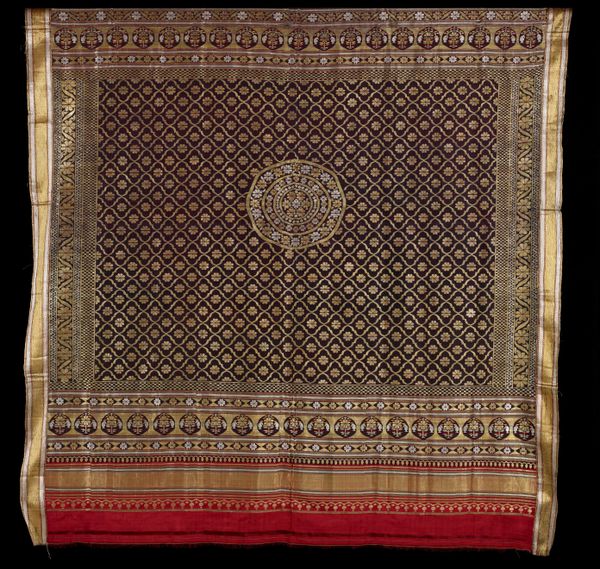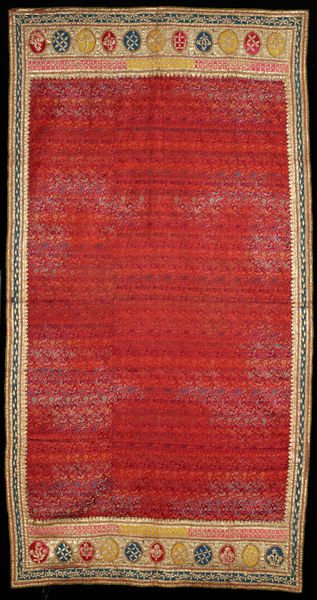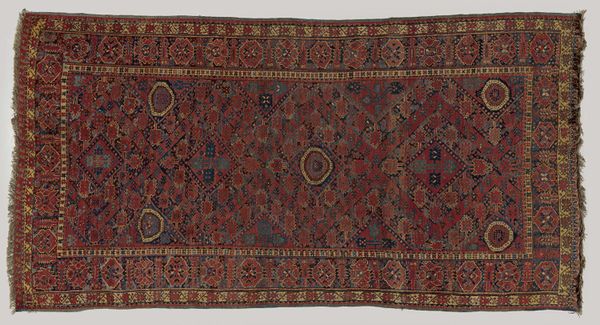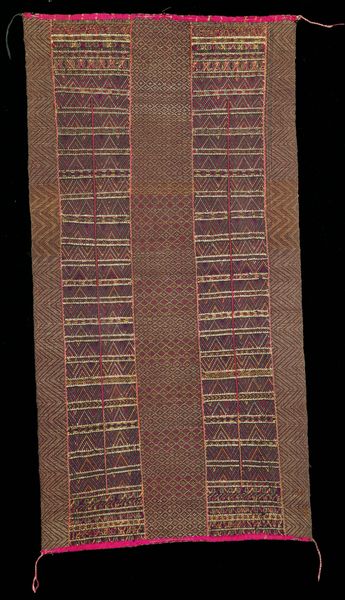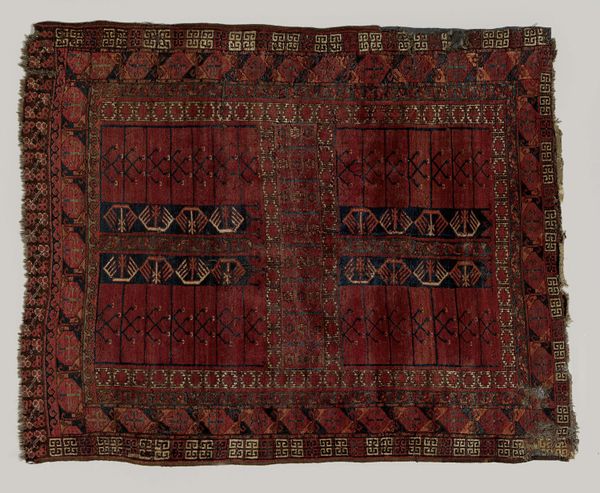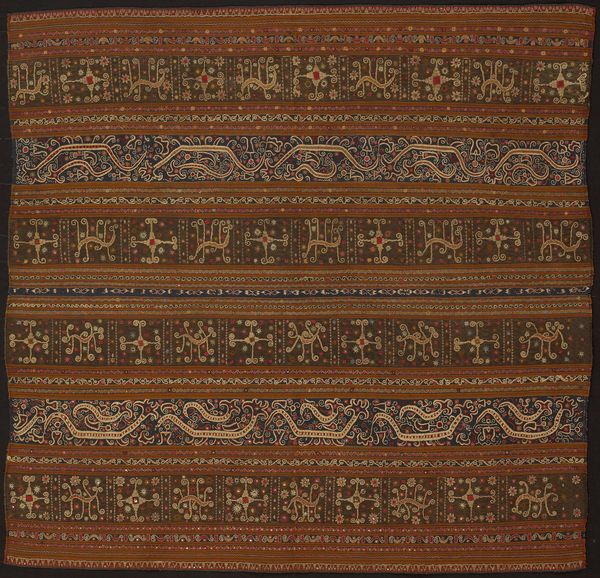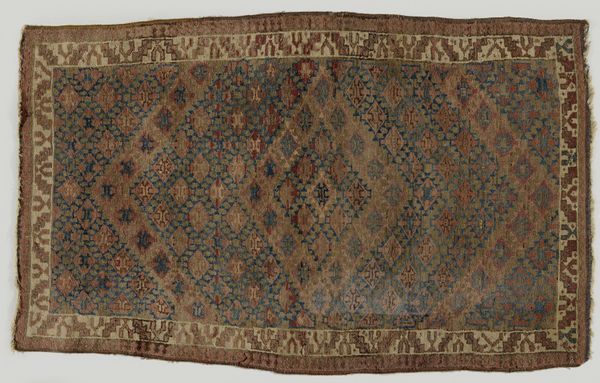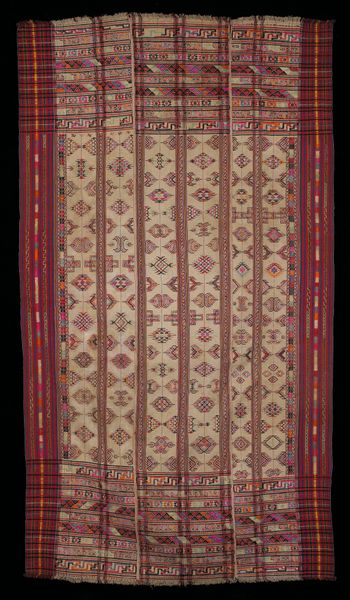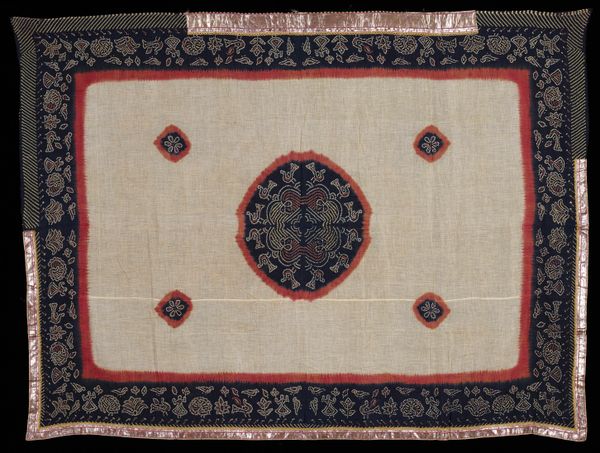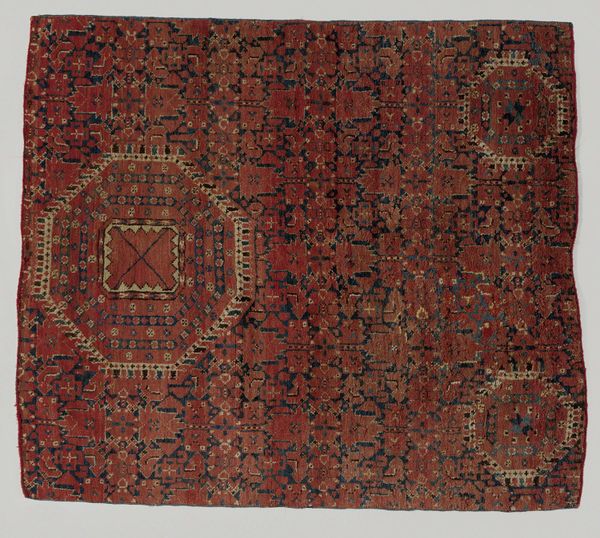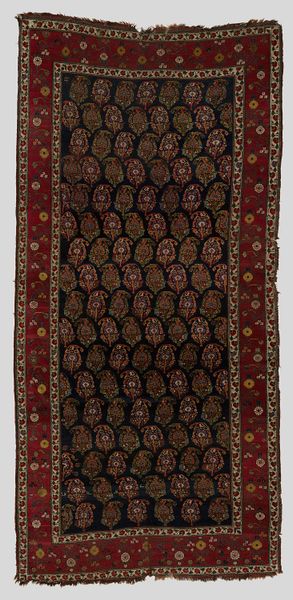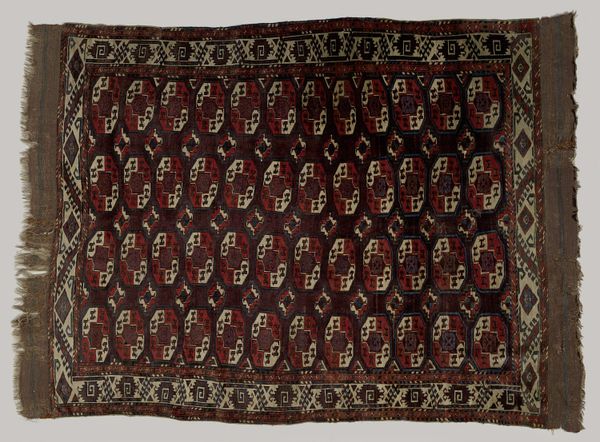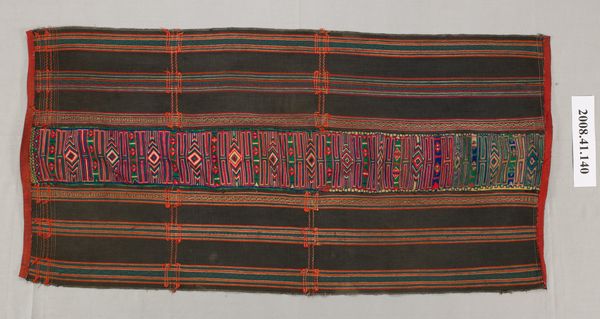
weaving, textile
#
weaving
#
textile
#
geometric pattern
#
geometric
#
islamic-art
Dimensions: height 401 cm, width 186 cm
Copyright: Rijks Museum: Open Domain
Curator: We're looking at "Oosters tapijt," or "Eastern Carpet," a textile artwork woven sometime between 1800 and 1949, attributed to Khameh weavers. It’s quite stunning. Editor: It has a definite gravitas. I’m immediately drawn to the repetition of lines, like a landscape seen through falling rain. The muted earth tones create a calming effect. It looks like it wants to absorb sound. Curator: These carpets served complex functions within Islamic society. As a portable piece of architecture, they signified space, but also status. Carpets indicated a patron's global connections because textile production was a significant component of trade. Editor: So the geometric motifs in the border aren’t simply decorative, but potentially emblematic? Those repeated triangular shapes punctuated by small circles read almost like stylized cypress trees. Or perhaps the 'Tree of Life'? Curator: Absolutely. We cannot overlook the influence of Orientalism and Western perceptions shaping its appeal and, in many ways, its production, right down to which visual features found favor in export markets. But regardless, consider its visual vocabulary as being tied into a pre-existing system of symbols. The interplay of geometry and calligraphy underscores its sophisticated worldview. The carpet becomes an interwoven prayer, tradition, and design manifesto. Editor: I wonder about the people who originally handled it. Were they wealthy merchants showcasing exotic wares? Or spiritual figures who presided over rituals? It’s incredible how textiles can hold the history of untold lives. It prompts you to consider both its mundane use and elevated value. Curator: Yes, these carpets occupy an interesting place in history. Mass produced to supply demand from Western culture, its meaning has both shifted and deepened. They can easily transform a house into a home and create both division and congregation within a culture. It also prompts considerations of our own assumptions about art and its purpose. Editor: Thinking about the long cultural lifespan of symbolic imagery in these carpets helps me to appreciate how design choices speak across the centuries, laden with unspoken meaning. Curator: Considering its role within larger structures of power, patronage, and cultural exchange truly enriches how we understand the lasting impact of this woven artifact.
Comments
No comments
Be the first to comment and join the conversation on the ultimate creative platform.
